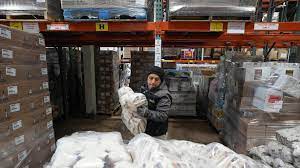
When Sean Rafferty got his start in the grocery business, anything that wasn’t sold got tossed out.
But on a recent day, Rafferty, the store manager for ShopRite of Elmsford-Greenburgh in New York, was preparing boxes of bread, donuts, fresh produce and dairy products to be picked up by a food bank. It’s part of a statewide program requiring larger businesses to donate edible food and, if they can, recycle remaining food scraps.
“Years ago, everything went in the garbage … to the landfills, the compactors or wherever it was,” said Rafferty, who has 40 years in the industry. “Now, over the years, so many programs have developed where we’re able to donate all this food … where we’re helping people with food insecurities.”
Globally, about a third of food is wasted. In the United States, it’s even higher, at 40%, according to the Harvard Food Law and Policy Clinic. The U.S. spends about $218 billion each year growing and producing food that is wasted. About 63 tons (57 metric tons) goes to waste, including 52.4 tons (47.5 metric tons) that ends up in landfills and 10 tons (9 metric tons) never harvested from farms.
Broad Leib says 20% of water in the U.S. is used to grow food “that we then just throw away, so we’re basically taking water and putting it directly into a landfill.”
But she and others also note there is growing awareness of the need to do something about food waste in the U.S.
In 2015, the U.S. Department of Agriculture and Environmental Protection Agency announced a goal of 50% food waste reduction by 2030.
That has prompted a number of state-led initiatives, along with smaller, nonprofit efforts.
Ten states and the District of Columbia have passed legislation or executed policies to reduce, compost or donate waste. All 50 states have passed legislation shielding donors and recovery organizations from criminal and civil liability linked to donated food.





